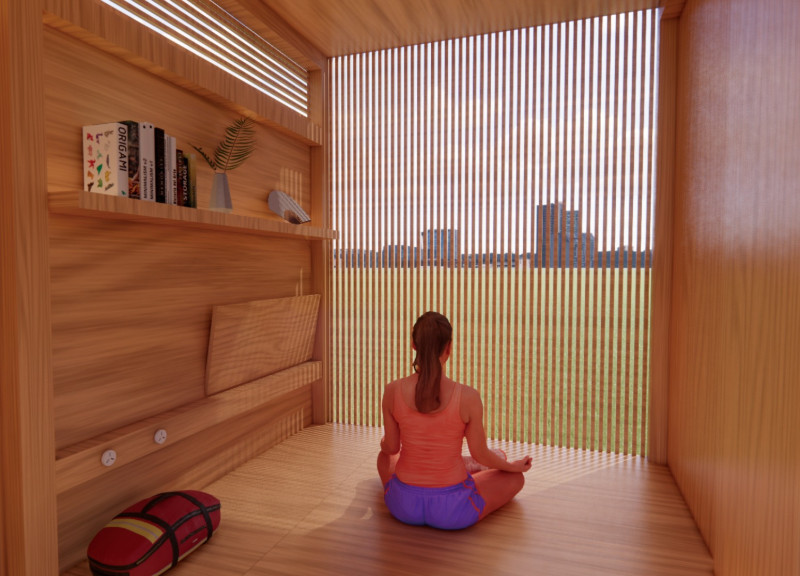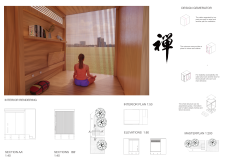5 key facts about this project
The primary function of the cabin is to serve as a meditation space, offering users a refuge from daily distractions. It can be utilized for individual reflection, meditation sessions, or quiet contemplation. This dual functionality supports both personal use and potential communal gatherings, enhancing its versatility as a meditation retreat.
The design incorporates several critical elements that contribute to its overall effectiveness and appeal. The use of wood as the main material adds warmth to the structure, creating a sense of comfort. Transparent slats integrated into the façade allow natural light to filter through while maintaining privacy. This clever use of materials not only preserves the calming ambiance but also fosters a connection with the outdoors. Built-in shelving within the cabin maximizes space efficiency, ensuring an uncluttered interior that encourages focus.
The architectural design includes key features that distinguish this project from conventional meditation structures. The cabin is adaptable, with an inclusive entrance design that caters to individuals with mobility challenges. This emphasizes accessibility and reinforces the cabin's role as an inviting space for all. The quick assembly approach reflects modern construction trends, utilizing engineered wood and composite materials that facilitate efficiency while reducing environmental impact.
In addition, the cabin's spatial organization has been carefully considered. The internal layout provides a dedicated meditation area separate from a functional entrance zone, ensuring a seamless user experience. The relationship between these spaces has been meticulously crafted to provide a clear transition into a state of mindfulness, enhancing the overall effectiveness of the design.
The architectural plans, sections, and designs provide further insights into the project's execution. For those interested in exploring the specifics of this meditation cabin, reviewing the architectural plans and sections will reveal more about the thought processes involved in its design. The careful consideration of materials, spatial organization, and function makes this cabin a noteworthy example within the realm of contemporary architecture. For additional details and design elements, the project presentation offers a deeper dive into the architectural ideas that inform this unique meditation space.























